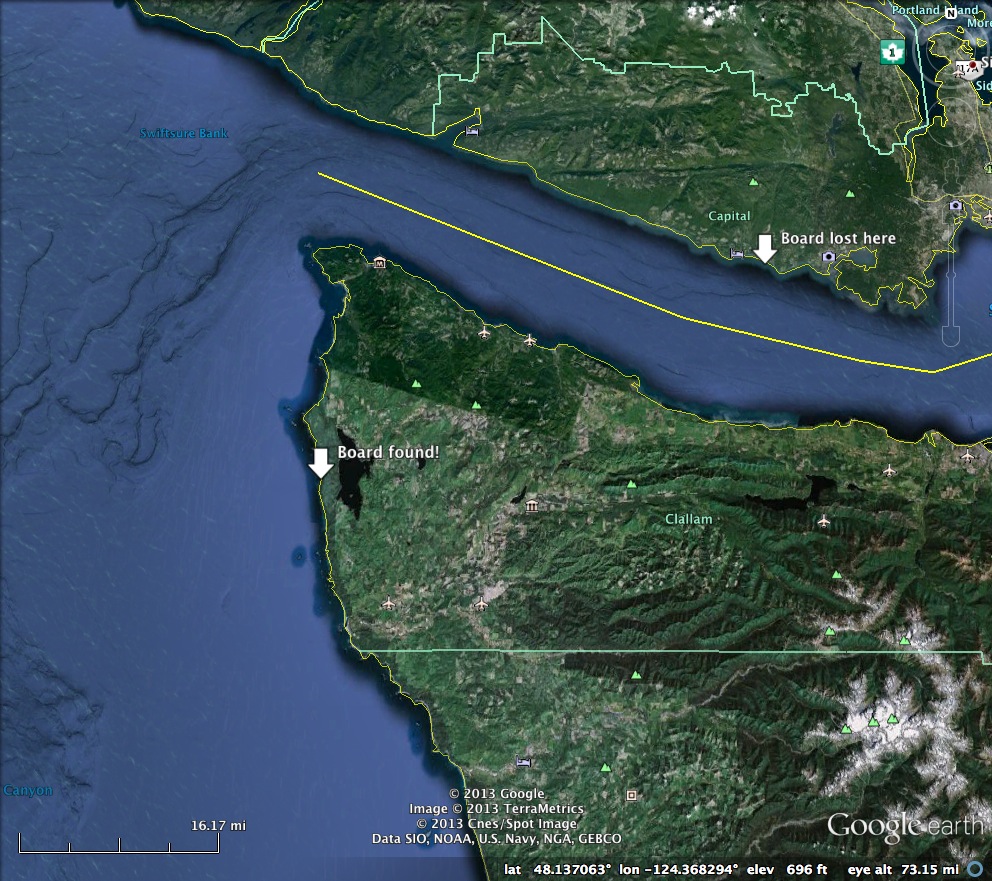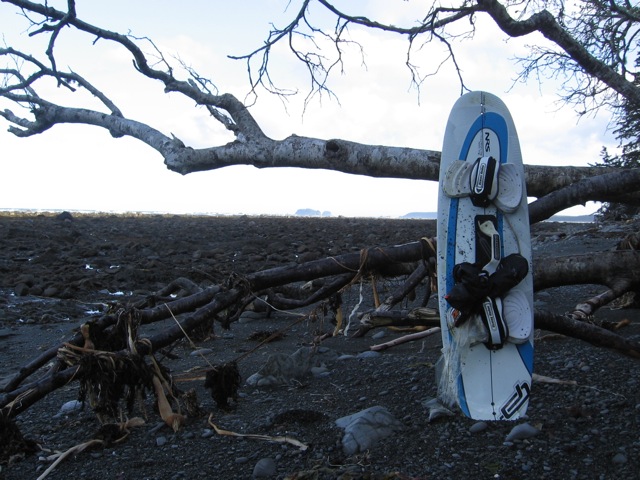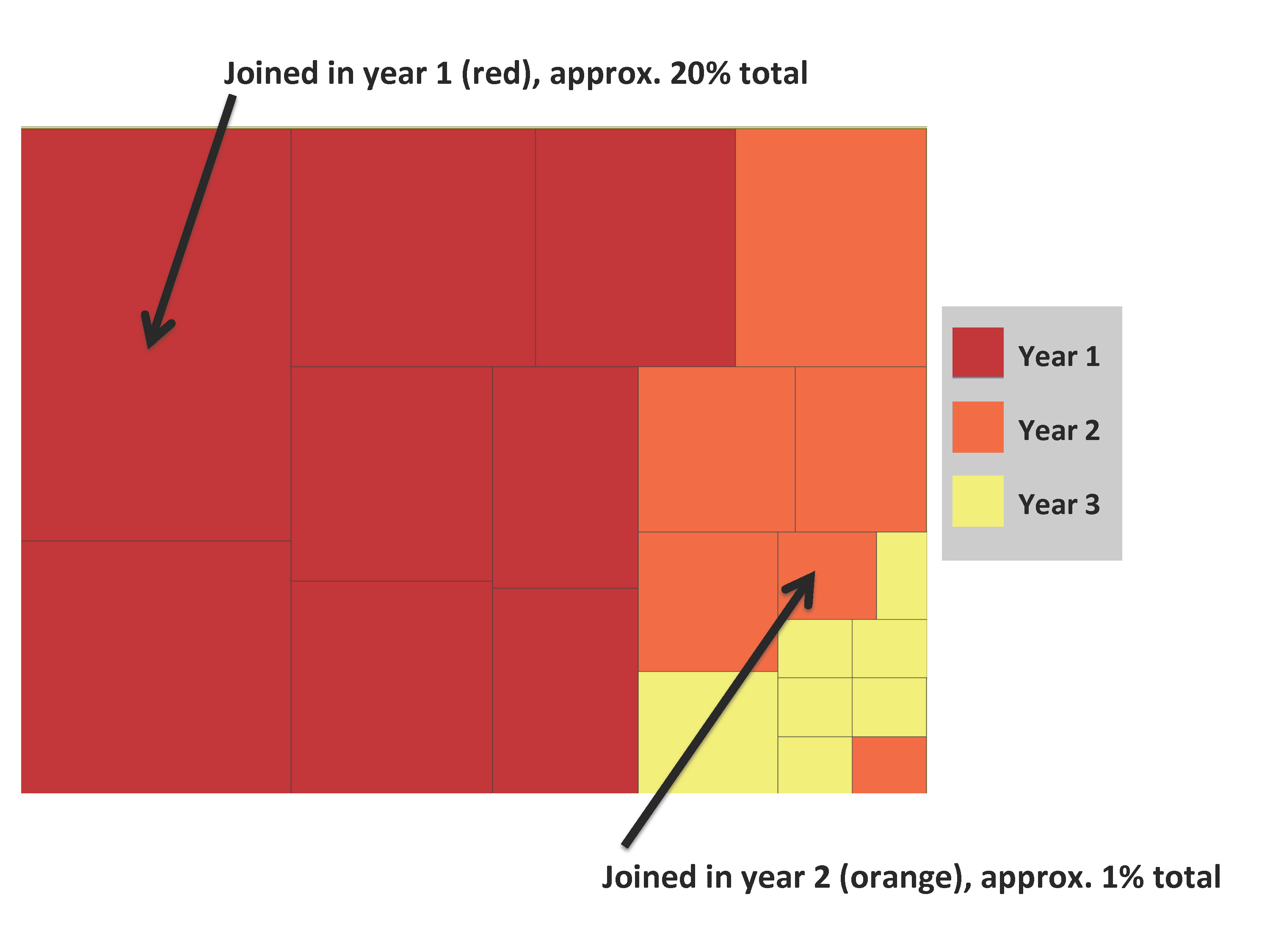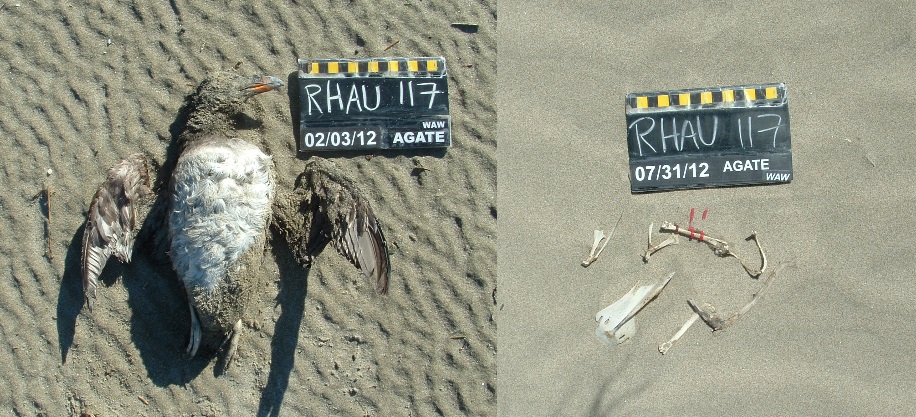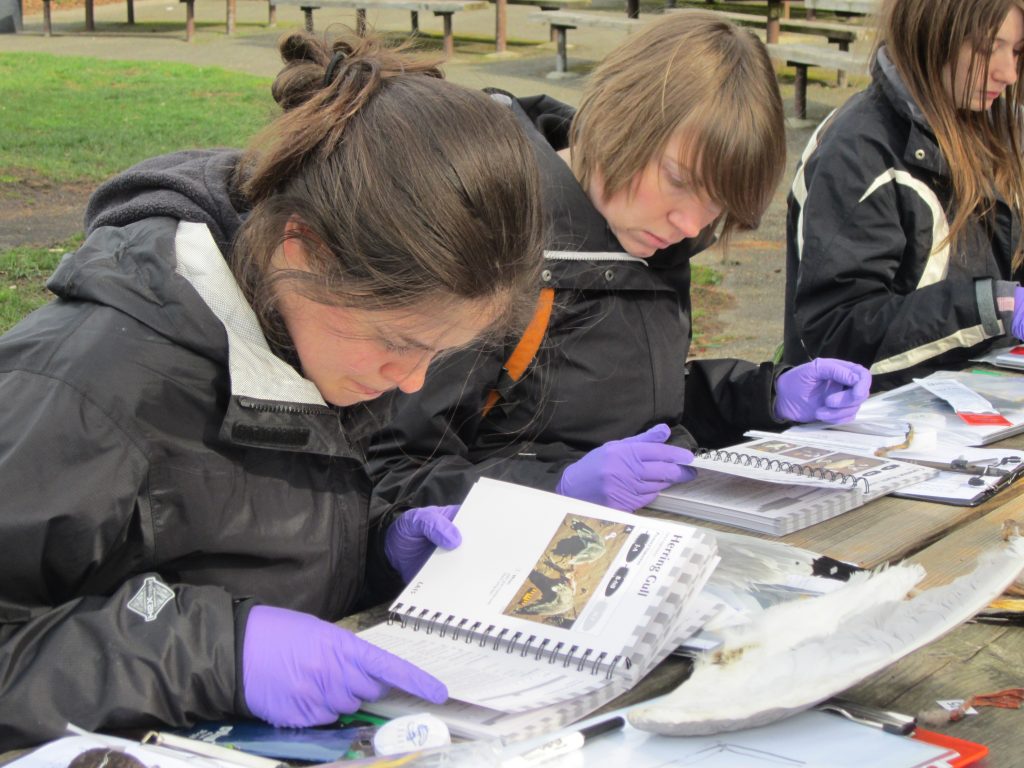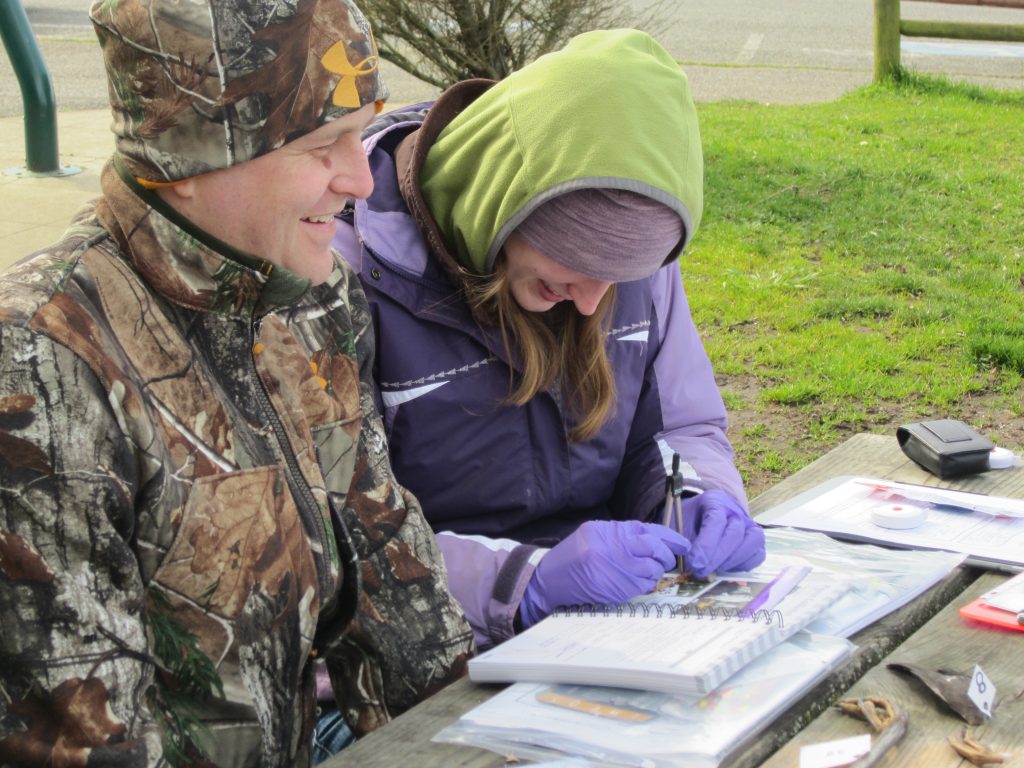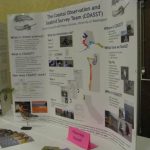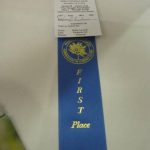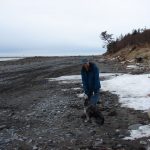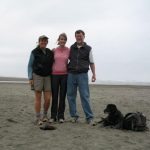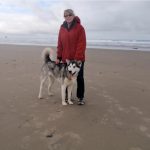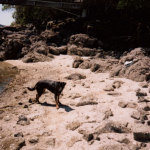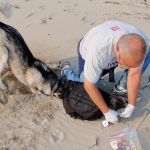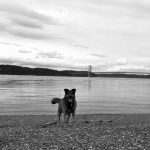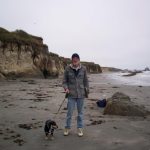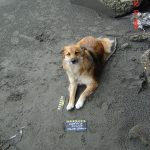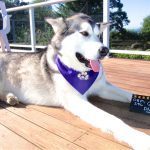Thanks Janice, who surveys the Damon Point East and West, for introducing us to this neat and helpful addition to the COASST field kit: a chalk holder. Most any office supply store carries these portable plastic holders that turn your chalk into a mechanical pencil. “It’s especially helpful in the rain, and for using up those smaller pieces,” adds Janice.
Tag Archives: Volunteer
Kite Board Washes in from Canada!
On April 30th, while walking along the beach just south of Yellow Banks (on the north coast of Washington), COASST volunteer Dave Easton found a kite board washed up on shore. The board had the owner’s E-mail on it, so Dave contacted him. It turns out the owner had lost it on April 6th in Canada after a bad wipe out about 400 meters off shore. As Dave puts it, it’s “amazing how the currents and wind work; choreographed chaos.” Next time you’re out scouring the beach for marine debris, keep in mind the potential origin of the debris and the long journey it took to get there. The two are now working to reunite the owner with his lost board.
Volunteer Mosaic
Last month we went to a talk by climate scientist Dr. Kevin Wood – he’s a part of the “old weather” team at the NOAA-University of Washington Joint Institute for the Study of the Atmosphere and the Ocean (JISAO – rhymes with cow), and saw this really cool visual which displays total volunteer effort (in this case, logbook pages digitized) in one rectangle. Each box within the rectangle is a participant and the size (or area) of the box is scaled to the percent of total effort. Colors allow the viewer to distinguish one box from another.
For the COASST visual, we decided to use color to display the year each COASSTer joined. Here’s a simplified version:
Colors indicate when each person joined (year 1, year 2 or year 3). The size of each box is scaled to the total amount of time each person has surveyed. At the top left is someone who joined in Year 1 and contributed LOTS of time, about 20% of all survey effort shown (over all 21 squares). Toward the bottom right are participants with less time invested in surveying, including one we point out who joined in Year 2 and has contributed about 1% of the total survey effort. Standing back, it’s easy to see a color gradient which reflects that participants who began in Year 1 (red) tend to have contributed more – on average – than those who only just started in Year 3 (yellow).
Here’s what the actual COASST survey effort visual looks like, over the last fifteen years and all 2,112 people who have gotten out there to collect data for us:
Green and blue years are earliest, so it is not surprising that these “old folks” dominate the upper left.
The very largest box represents about 1.8% of the total time, and you can see that there are plenty of folks who joined in the late 2000s and have already racked up the hours! Harmful algal blooms, puffin die-offs, grebe mortality – there is always something pulling COASSTers out to do extra surveys.
Small boxes don’t mean slackers! Lots of incoming COASSTers (yellow) are toward the bottom right – our program continues to grow. Many of the small boxes are inside waters COASSTers – with short beaches and nary a bird in sight, it’s just not possible to amass the hours of the “birdy beach” volunteers.
In fact, each COASSTer contributes their piece to the COASST whole – all of us together make COASST successful and sustainable, and now, colorful!
COASSTer Receives National Service Award

Nancy Messmer and Roy Norris, recipients of the 2013 National Marine Sanctuaries Volunteer of the Year Award.
Congratulations are in order to Nancy Messmer (and Roy Morris) who earned the National Marine Sanctuary Foundation’s Volunteer of the Year Award, to be celebrated on June 4, 2013 in Washington DC. This husband/wife team has cumulatively donated over 500 hours to Olympic Coast National Marine Sanctuary activities in 2012. Nancy, a COASST volunteer since 2010, has logged over 134 hours (not including travel!) on 74 surveys at four different beaches: Hobuck, Hoko West, Island View, and Sekiu River West. Sixty nine birds found – way to go Nancy and Roy!
Spotlight on Burke Ornithology
COASST volunteers may think they’re the only people that pay attention to dead birds, but it turns out they’re not alone!
Recently our local NPR station, KUOW, profiled citizens collecting dead birds (with proper permit) from their backyard (and surrounds) for the Ornithology Collection at the Burke Museum. Each year, the collection receives about 500 birds from citizens (window strikes, vehicle strikes, cat kills etc). As a whole, the specimens (all 99,000 of them!) – archived as skins, outstretched wings, and tissue samples – provide a valuable resource to scientists.
Seabird scientists, too! Dr. Ann Edwards used the collection to answer, “have fisheries discards shaped the diet of Laysan Albatross?” by sampling Laysan feathers from museum specimens, current NW Hawaiian Island breeders and bycatch specimens from Hawaii and Alaska longline fisheries.
Rob Faucett, Collections Manager, helps assist a variety of outreach and education projects, in addition to research. In the creation of Beached Birds-Alaska and more recently, the Wing Key, we’ve accessed the collection to answer our own questions – can you really tell Thick-billed and Common Murres apart by wing alone (answer: no). Can you separate a storm-petrel wing from a small alcid (answer: yes, the outermost primary is more than a feather’s width shorter than the next). And after hours of pouring over these birds, we can’t resist having a little fun (see below).
All About Refinds!
Ever wondered what happens to the birds you tag on COASST surveys? And why do we tag them, anyway?
Much of the time, the carcasses are swept away with the next high tide, or are carried away by scavengers. Most times, a bird is never seen again. Think of all the others that are deposited once and for all on unsurveyed beaches – we are none the wiser!
Other times, we know exactly what happens to a beached bird. We have good evidence that they’re more mobile than you might think. In January, Bonnie Wood and Janet Wheeler at Salt Aire North found a Pacific Loon. Later that same day, Amy and Jack Douglas happened upon the very same bird on the neighboring beach, Bonge. Is that possible? Turns out, carcasses do move–by dogs, humans, or raptors. Without a unique tag combo, we’d never be able to trace such refinds.
Those dead birds untouched by animals and tides remain right where they are. Certain beaches are well known among COASST staff as “bird keepers.” These are often the most expansive sandy beaches, where a bird may be buried by blowing sand for many months, only to be uncovered and refound months later. The tags, then, are the only way to tell that such birds should not be counted as a “new” find.
We ask our volunteers to collect data on refinds each time they’re encountered. We don’t require measurements or photos after the original find, but we do ask for a few fields: where found, body parts, species, tie number and color sequence. Some volunteers do choose to take photos each time, and they allow us to make some fun “before-and-after” comparisons. In combination with refind data, this gives us an idea of which parts last– the feet and wings (the basis for the COASST guide).
This intact Rhinoceros Auklet was reduced to just a sternum, the tagged wing bones, and a few other bones after 6 months on Agate Beach, in Oregon.
This Northern Fulmar was one of 24 found on December 3, 2010. A month later, it was found again, only slightly degraded. Then in September 2012, amazingly, it turned up again a whopping 21 months after its original find date!! A new persistence record for COASST!
All photos by Wendy Williams
Weekend on the North Coast
April 26th to 28th COASST Volunteer, Barbara Blackie, is taking out her Western Washington University Marine Ecology class to do COASST surveys on several beaches in the North Coast; Hobuck, Waatch, Shi Shi, Sooes East and West. Jane will be joining in on the fun. If you would like to come along for a refresher let Liz know. It should be a great time!

2011 group of Western Washington University students at Ruby Beach, on the north coast of Washington.
Seattle Training Brings 14 New Volunteers to COASST
This past Saturday, 14 energetic recruits joined Liz at Carkeek Park in Seattle for an on-the-beach COASST training on a beautiful (yet very chilly) spring day. After an introduction to the program, the team reviewed the COASST survey protocol and completed their first survey (no beached birds to report!). Beached bird identification followed, with plenty of hands on practice using the COASST teaching collection. These guys were experts at beached bird ID in no time – a great group of volunteers!
Five participants joined as part of the Puget Sound Corps (PSC) a division of the Washington Conservation Corps AmeriCorps program. PSC members are generally recent high school or college graduates, or veterans who sign up to spend one year working with various state agencies (in this case, Washington Department of Natural Resources) participating in ecological monitoring programs and restoration work. PSC COASSTers will adopt several beaches in Washington’s Aquatic Reserves (Cypress Island, Murray Island, Nisqually Reach) – a great partnership for building a baseline at new and existing Puget Sound beaches.
Blue Ribbon for COASST
Thanks to volunteer Kathy Linnell a COASST informational poster earned first prize at the Washington State Garden Show. Other contestants submitted posters on urban chickens, bird house building and blue herons. Way to go Kathy!
- The COASST informational poster display at the Washington State Garden Show.
- Way to go Kathy and COASST!
Canine COASSTers!
- Even the snow can’t keep these two from enjoying their time together on a COASST survey.
- What a great looking pair!
- A dynamic duo that never misses a good bird find.
- Melissa’s dog Sprout particating in the survey!
- Olli’s dog Silver showing offf her Husky COASST pride!
- Another shot of Silver COASSTing!


